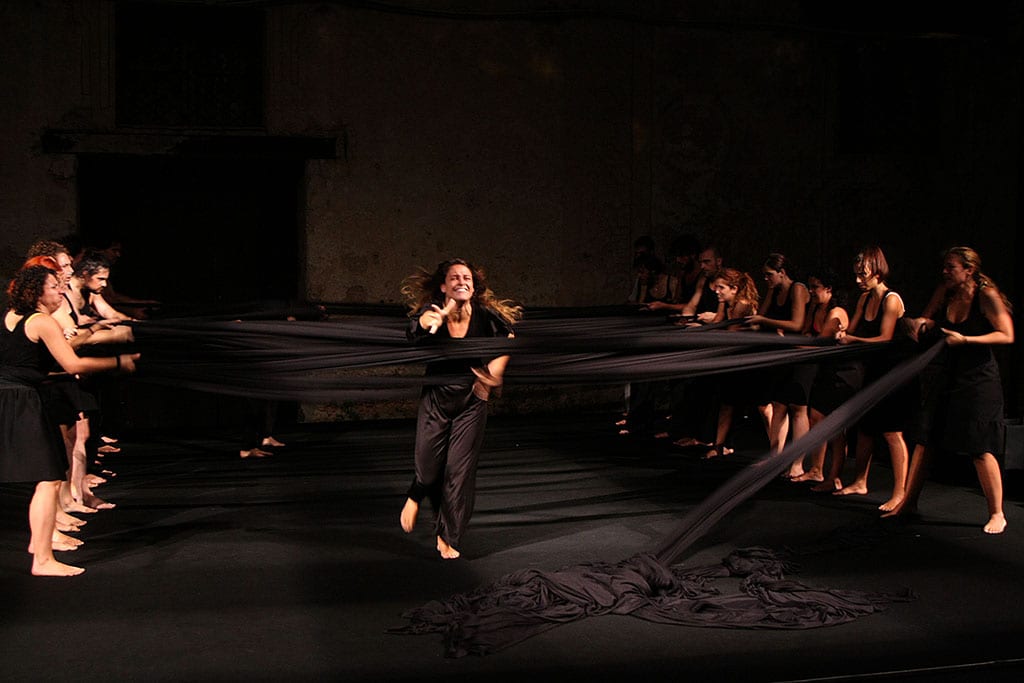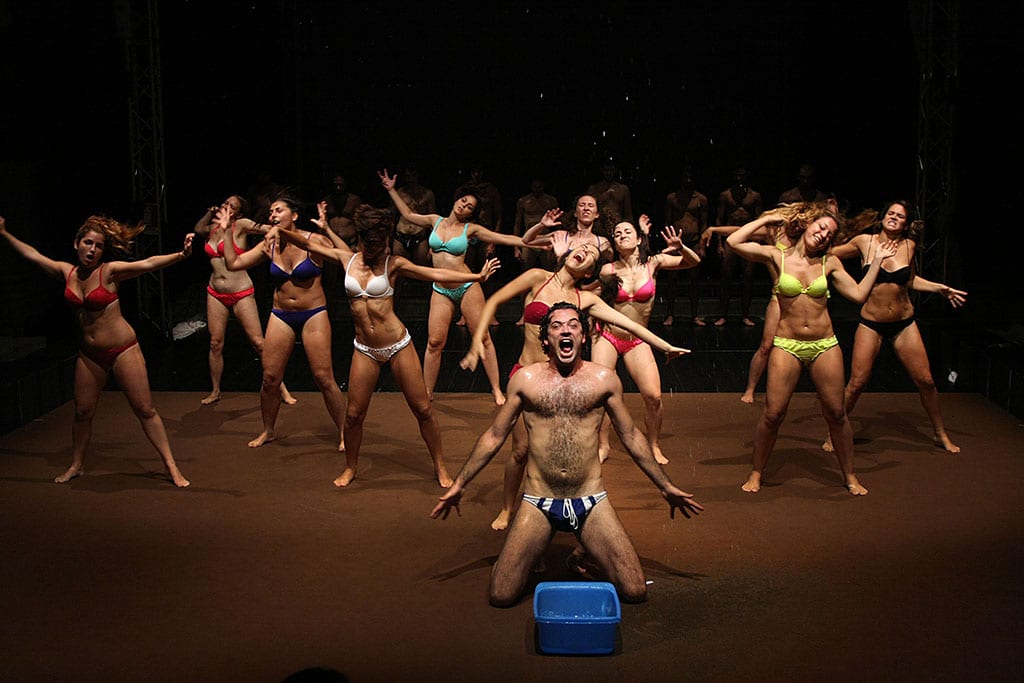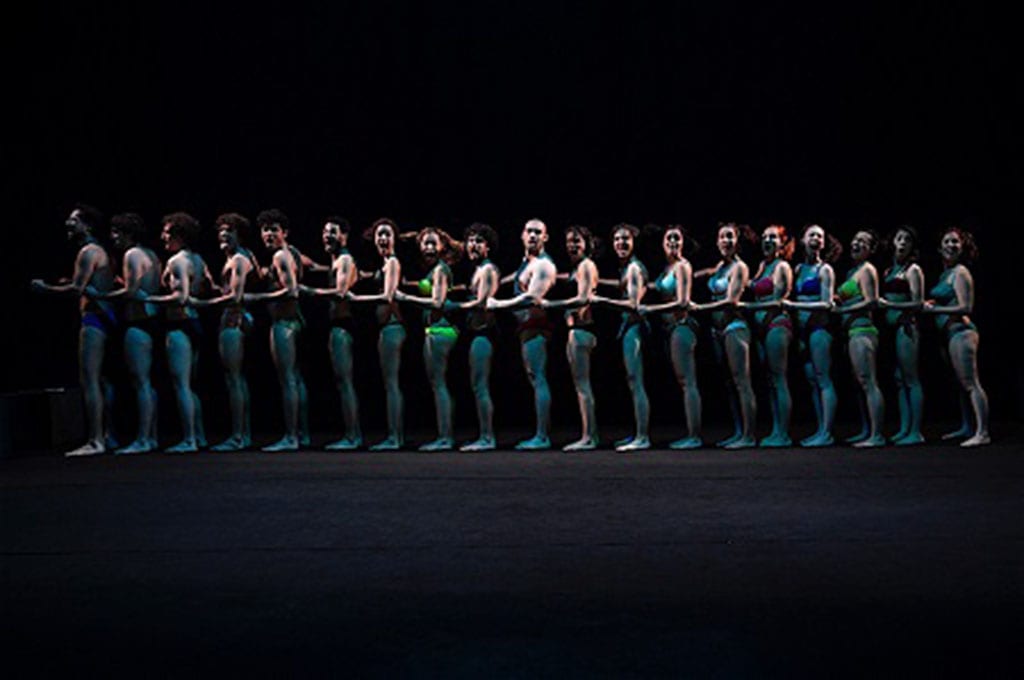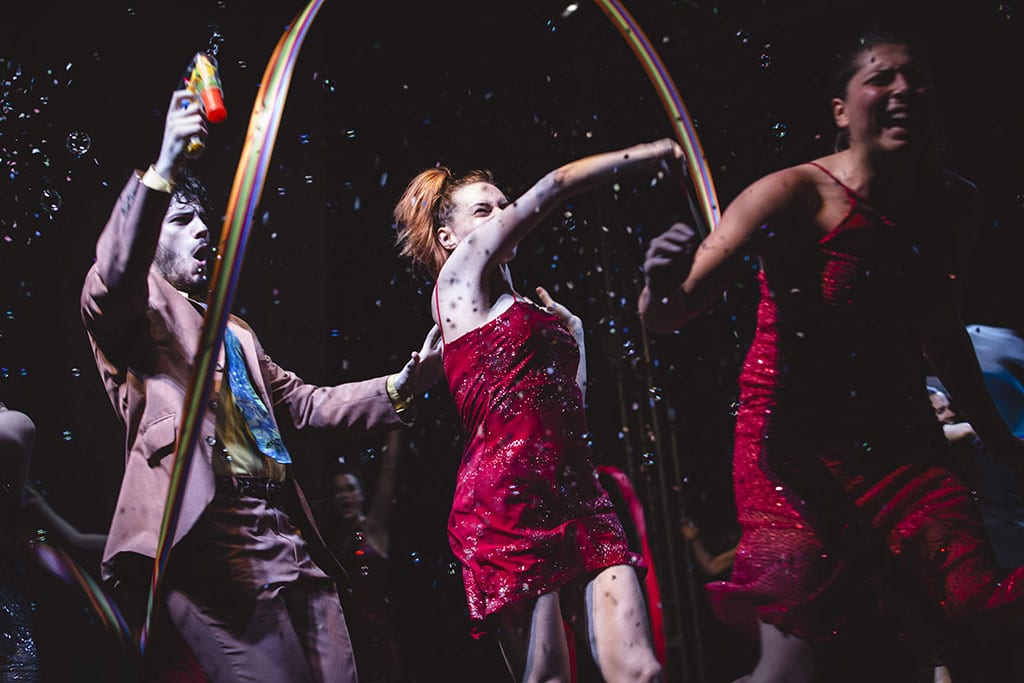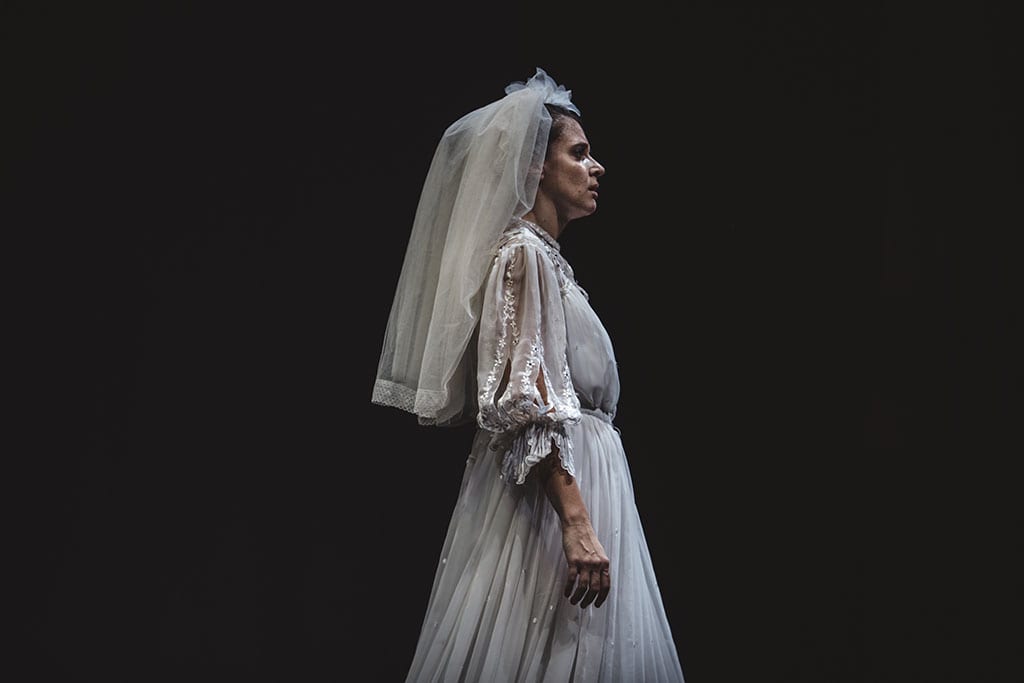This adaptation of the Odyssey by Emma Dante was premiered at the Festival of Two Worlds in Spoleto, Italy, but the real debut, says the director, was in Palermo, her hometown, at the Teatro Biondo on the 28th of October 2016, a date that marks the end of the first year of the “Scuola dei Mestieri dello Spettacolo” led by Emma Dante herself.
Odissea a/r is a metaphor for life, for the continuous journey that a man treads during his lifetime. Therefore, it’s no coincidence that the viewer is struck immediately by the relentless pace of the actors walking back and forth in synchronized movements: “The journey is intended as a movement from the origin and back”, Emma Dante explains.
This Odyssey is not centered on the fantastic adventures of the hero Ulysses but on his absence from the palace, on the grief that wears down his wife Penelope and his son Telemachus who grew up in the absence of his father and who in the end decides to take courage and look for him. Penelope makes her entrance on stage wrapped in a kind of burqa, which emphasizes her mourning, mocked by her handmaidens, fed up with the long waiting and anxious to join the uncouth Suitors.
During the performance the weaknesses and faults of men are showcased, but also the gods are humanized: Zeus, for example, is presented as a self-centred and vain bodybuilder.
On stage, as in life, moments of joy and sorrow alternate; the nobility of Penelope and Telemachus is in contrast with the disrespectful and rude behaviour of the Suitors, who, despite being the invaders of the palace, still manage to be liked by the public with their lines in Sicilian dialect and their overwhelming irony.
The author provides an ironic and compelling representation full of music, colour and well structured movements: daily actions such as getting dressed and undressed are continuously repeated by the actors on stage. There is no set design but just a space filled by the chorus whose evocative choreography creates a sort of dynamic set. The production makes innovative use of props, such as the images of a black cloth woven by all the maids to form a labyrinthine vortex that harnesses Penelope, or the sea recreated by large strips of paper, in which the actors wearing colourful swimwear play and swim.
Eventually Odysseus, Penelope and Telemachus manage to meet after twenty years, rediscovering their fragility and their imperfections.
L’Odissea di Emma Dante viene presentata in prima nazionale al Festival dei due Mondi di Spoleto ma il vero debutto, dice la regista, è quello del Teatro Biondo Stabile di Palermo avvenuto il 28 ottobre 2016, perché sancisce la conclusione del primo anno della Scuola dei mestieri dello Spettacolo diretta proprio da Emma Dante presso il teatro palermitano.
Odissea a/r è metafora della vita, del continuo viaggio che compie l’uomo durante il suo cammino. Non a caso quello che colpisce immediatamente lo spettatore è il ritmo incessante degli attori che camminano avanti e indietro con un movimento sincronizzato: “ll viaggio inteso come movimento che parte dall’origine e all’origine torna”.
Questa Odissea non è imperniata sulle avventure fantastiche che compie l’eroe ma sulla sua assenza dal palazzo, sul dolore che logora Penelope e sulla figura di Telemaco che cresce lontano dal padre e poi finalmente decide con coraggio di andare a cercarlo. Penelope fa il suo ingresso in scena, avvolta in una specie di Burka che enfatizza il suo lutto e viene derisa dalle ancelle, stufe della lunga attesa e impazienti di unirsi ai rozzi Proci.
In scena vengono rappresentate le debolezze e i difetti propri degli uomini, anche gli dei vengono umanizzati, come Zeus che viene presentato alla stregua di un culturista egocentrico e vanesio.
Sulla scena, come nella vita, si alternano momenti di gioia e dolore, la nobiltà d’animo di Penelope e Telemaco è contrapposta al comportamento irrispettoso e rozzo dei Proci, che nonostante siano gli invasori del palazzo, riescono comunque a risultare simpatici al pubblico con le loro battute in dialetto siciliano e la loro ironia travolgente.
Una rappresentazione ironica e coinvolgente quella di Emma Dante, ricca di musiche, colori e movimenti ben strutturati, gesti quotidiani come lo spogliarsi e il rivestirsi sono continuamente ripetuti dagli attori in scena. Non esiste una scenografia ma lo spazio è riempito dalla coralità degli attori che riescono a creare immagini suggestive dando vita ad una vera e propria scenografia viva e dinamica; bellissima l’immagine della tela nera tessuta da tutte le ancelle, che forma un vortice labirintico che imbriglia Penelope, o ancora il mare ricreato da grandi strisce di carta in cui gli attori giocano e nuotano indossando colorati costumi da bagno.
Alla fine Odisseo, Penelope e Telemaco riusciranno a ritrovarsi dopo vent’anni, riscoprendo le loro fragilità e le loro imperfezioni.
Teatro Biondo in Palermo until the 8th of November 2016
Teatro Bellini in Naples until the 13th of November 2016
Teatro Argentina in Rome from 31st of January until the 5th of February 2017
Teatro Verdi in Pordenone on the 9th and 10th of February 2017
Teatro Manzoni in Pistoia fro the 17th to the 19th of February 2017

